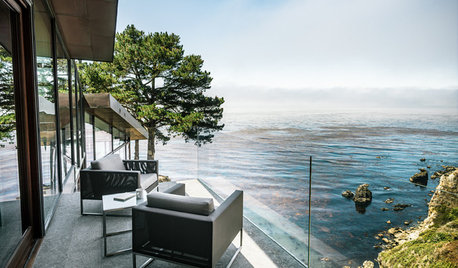We have a large mountain ash by our house that provides some shade. Unfortunately, one of the main branches at the crotch was severed a few years ago, at an angle which left it susceptible to rot etc--it's obvious that the tree is in its decline. I'm sure we have 5-10 plus yrs more, but it's looking ratty and I'd like to replace it with something.
With re to the ash, my favorite attribute is the the sun through the compound leaves, casting shadows on our interior walls. The tree is a good 30' tall and I wouldn't mind something comparable in height. I like mimosas, but aren't they typically shorter(?) and I'm not sure how invasive they are in this climate. I can take the shedding leaves and flowers. That said, I'd like more options. Maybe something with less of a spreading habit and more of an upright one? Your input please. Thanks in advance, I love this forum!










Embothrium
botann
Related Professionals
Redondo Beach Landscape Architects & Landscape Designers · River Forest Landscape Architects & Landscape Designers · Burlington Landscape Contractors · Jackson Landscape Contractors · Bound Brook Landscape Contractors · Brandon Landscape Contractors · Painesville Landscape Contractors · Teaneck Landscape Contractors · Northlake Landscape Contractors · Sun Valley Landscape Contractors · Maple Heights Landscape Contractors · Gainesville Fence Contractors · Midvale Fence Contractors · San Pedro Fence Contractors · Staten Island Fence Contractorsbotann
grrrnthumb
Embothrium
reg_pnw7
grrrnthumb
Embothrium
grrrnthumb
Embothrium
ian_wa
Embothrium
Embothrium
gardengal48 (PNW Z8/9)
Embothrium
locust8Original Author
locust8Original Author
botann
Embothrium
botann
grrrnthumb
Embothrium
dottyinduncan
madrone